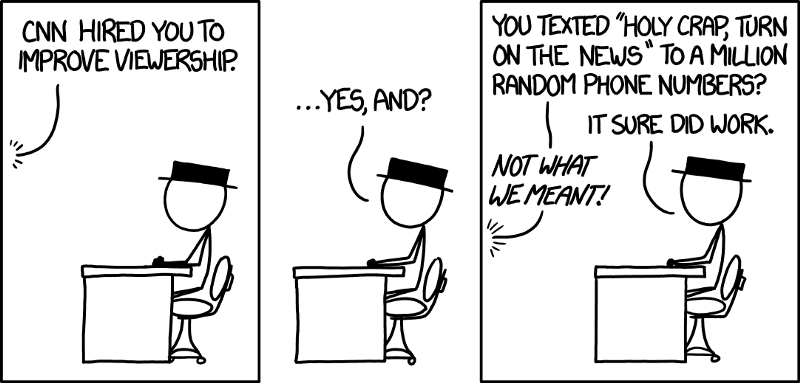Top Questions That Kill Startups at the Idea Stage

These are the questions that you should never ask of your prospective customer.
When testing your idea among your prospective customers it is very important to know which questions to ask. The best book to understand how to talk to your customers is written by Rob Fitzpatrick. He writes in detail about these questions.
Let us visit 4 examples to understand what to avoid
- Would you like to buy something that did X?
- Do you like the idea of X?
- How much would you pay for X?
- If we upgrade Y to X would you consider replacing Y?
Would you like to buy something that did X?
The first instinct when testing your idea is to know if someone would buy it once it is finished. This is a terrible question because no one, especially in today’s politically correct world, would say no as an answer to this question. Even if they do, that answer will be driven by their current state of mind rather than their actual needs.

Solution: Try to figure where that product might fit without directly asking. e.g. Let’s say my idea is to build a less alarming alarm clock. Instead of asking whether they would like to use a less alarming alarm clock I should start from how they wake up every day and whether they face any challenges with waking up on time.
Do you like the idea of X?
This is equally terrible because it is forcing the customer to become the entrepreneur. It is your job to analyse the idea and its business feasibility. The customer can never grasp the whole chain of execution for any idea. Any answer the customer gives to this question can misguide you at best.

Solution: Again resort to understanding the part of their day where idea X might have an impact rather than directly evaluating the idea.
How much would you pay for X?
This is another of those ideas which misguide you. First of all, the answer to this question tells you nothing about the price point your actual product should have. Secondly, even the answer that you get doesn’t convey what the customer will actually pay. It only conveys what they think you want to hear or what they feel your idea might be worth to others.

Solution: Try to ascertain their current expenditure on a similar item or the opportunity cost of not having this item e.g. to know if they will buy the less alarming alarm clock ask them about the price of their current alarm clock or the loss they incur by missing their deadlines or the inconvenience they receive because of their alarming clock.
If we upgrade Y to X would you consider replacing Y?
A lot of the startups are trying to figure out how can they improve the status quo. In this race, they rush to ask the customers if they would buy the improved versions. This is a dangerous question!! No one would say no right away. This question begets an impending no — one that you will hear once you come back with the upgrade.
Even though the intent is right the approach is not! In the customer’s mind, this question sounds like, “Without any inconvenience to me, will I like an upgrade?”. This will always invite a “yes”. But when you show up with the upgrade the inconvenience occurs in one of the following forms
- Higher price
- The time investment to ramp up on the new technology
- Training efforts
- Deployment changes
- Data migration
- Approvals from higher-ups

Any or a combination of these then become the reason for a resounding “No”.
Solution — Try to figure out if they have spent any efforts in finding a replacement. If not most probably they won’t buy. e.g. If they have already bought multiple alarm clocks and have faced disappointment they might be looking for an alternative.

Finally, it is all about asking the right questions. The mom test is a wonderful book for those who are just starting out.
Member discussion